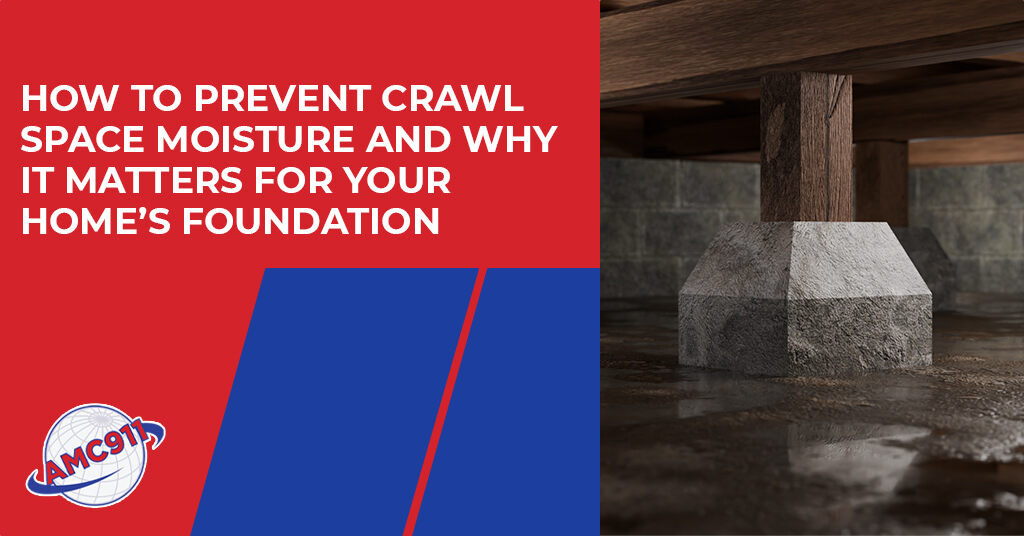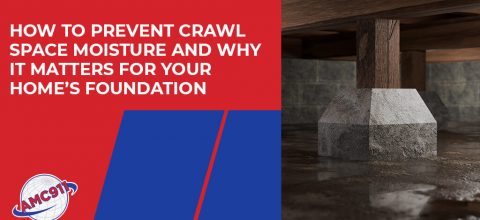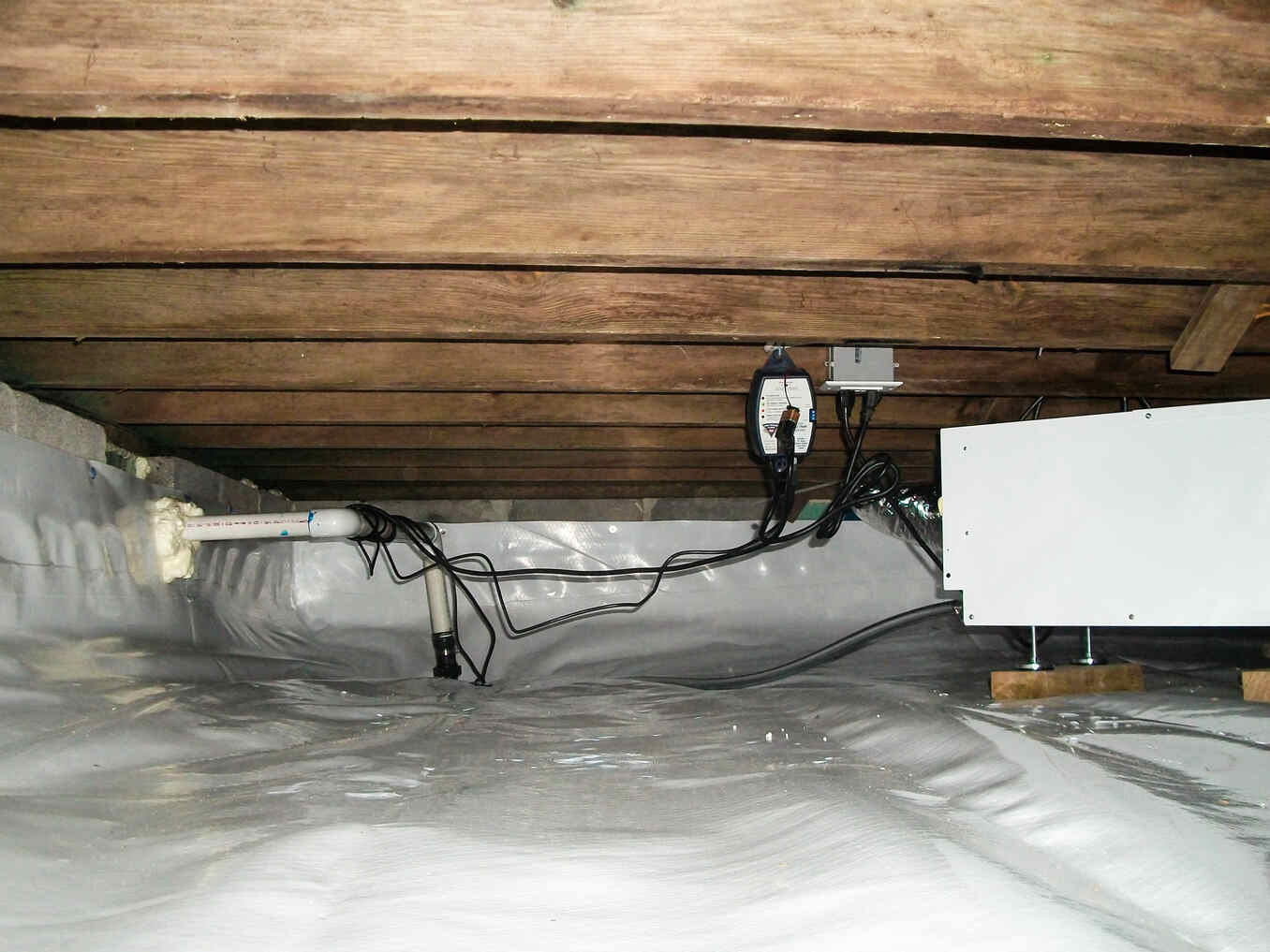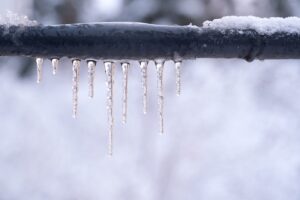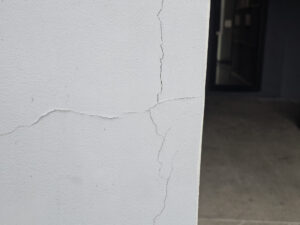Crawl space moisture is a common problem in many homes, and if left unaddressed, it can lead to severe foundation damage. Moisture buildup in your crawl space can weaken your home’s structure, cause wood rot, and lead to mold growth, all of which threaten the stability of your foundation. Preventing moisture in crawl spaces is essential for maintaining a healthy, stable home.
In this article, we’ll explore how crawl space moisture affects your foundation, the warning signs of moisture problems, and the best solutions to prevent damage.
Why Crawl Space Moisture Is A Serious Problem?
Your crawl space is an often-overlooked area of your home, but it plays a critical role in maintaining your foundation’s stability.
When moisture accumulates in your crawl space, it creates several issues:
Foundation Weakening
Excess moisture causes wood beams and floor joists to weaken and rot over time, undermining your home’s structural integrity. If left untreated, this weakening can lead to uneven floors, cracks in walls, and even severe foundation damage. Over time, this can culminate in costly repairs to restore your home’s integrity.
Mold Growth
Moist, dark environments like crawl spaces are ideal for mold growth. Mold damages the materials in your home and can lead to health problems for your family. Mold and mildew exposure may cause respiratory, allergic, and other health complications, particularly for individuals with pre-existing conditions. According to Washington State University, mold allergens in the crawlspace can migrate into the living areas of your home, potentially causing respiratory issues for occupants with allergies or asthma. Keeping your crawl space dry is vital to prevent mold from becoming a health hazard.
Increased Humidity
Crawl space moisture can elevate humidity levels throughout the house, leading to condensation, water damage, and even higher energy costs as your HVAC system works harder to maintain a comfortable temperature. Excess humidity makes your HVAC system work overtime, adding strain and reducing lifespan. This increased burden can lead to more frequent maintenance and higher energy consumption, further impacting your wallet.
Additionally, dampness in the air can sometimes provide enough moisture for mold to grow. To prevent this, indoor relative humidity (RH) should be maintained below 60 percent, ideally between 30 and 50 percent, according to the US Environmental Protection Agency.
Common Signs Of Crawl Space Moisture
Recognizing signs of moisture in your crawl space is essential to prevent damage to your home and protect indoor air quality.
Here’s a closer look at what to watch for:
- Sagging Floors: Excess moisture weakens wood beams supporting the floor, leading to sagging or uneven floors. Over time, this can compromise the structural soundness of your home.
- Musty Odors: A damp, musty smell—especially near the crawl space—is often the first sign of moisture. This odor results from mold and mildew, thrives in damp conditions, and can spread through your home, indicating moisture buildup below.
- Visible Mold or Mildew: Mold or mildew in the crawl space—or even on walls and floors above it—suggests excessive moisture. Mold growth occurs when there’s a persistent water source, posing health risks and indicating a need for immediate intervention.
- Standing Water: Puddles or wet areas in the crawl space are serious indicators of drainage issues or water intrusion, which, if unaddressed, can damage the foundation and attract pests.
- Wood Rot: Moisture can cause wood rot, particularly in beams and joists, weakening the crawl space’s framework and increasing the risk of structural damage.
- Insulation Damage: Insulation in the crawl space can absorb moisture, leading to decreased effectiveness, mold growth, and further spreading dampness into the home’s living areas.
- Pest Infestation: Damp environments attract pests such as termites, rodents, and insects, which can further damage the wood and insulation in your crawl space.
Real-World Examples Of Homes With Crawl Space Moisture Issues
Understanding how moisture in the crawl space can impact a home’s foundation highlights why prevention is essential.
Here are some real-life stories demonstrating the damage caused by crawl space moisture and the steps homeowners took to safeguard their homes:
Sherry’s Experience
Sherry discovered moisture accumulating under her home. Recognizing the potential long-term damage to her home’s structural stability, she took preventive action. She shares, “We recently had a problem with moisture under our home. We had a vapor barrier installed and a dehumidifier, and now everything is moisture-free.” By installing a vapor barrier, Sherry created a protective layer to block moisture from rising through the soil into her crawl space while the dehumidifier kept the humidity levels low. This combination prevented mold and protected her foundation from water damage and wood rot.
See Sherry’s review on Google Maps.
Susan’s Journey To A Drier Crawl Space
Susan’s crawl space moisture issues worsened during heavy rains due to low foundation air vents and an unsealed entrance, which let damp air into the crawl space. A thorough inspection revealed moisture-laden insulation. To address this, Susan had her wet insulation removed, mold treated, and a watertight Turtl door installed for better sealing. She explains, “The new door not only looks great but I’m hopeful it will reduce moisture intrusion.” With these improvements, Susan effectively reduced the risk of foundational damage and mold growth in her crawl space.
Read Susan’s full review on Google Maps.
These examples underscore why prevention matters for crawl space moisture. Proactive measures, such as installing vapor barriers, sealing entry points, and managing humidity levels, keep moisture out, protect your foundation, and help prevent costly repairs.
Best Solutions For Preventing Crawl Space Moisture
Understanding the various methods that provide immediate and long-term protection for your home’s foundation is essential for effective crawl space moisture prevention.
Here’s a closer look at some top solutions:
Crawl Space Encapsulation
- How it Works: Encapsulation involves sealing off the crawl space entirely with a vapor barrier and sealing vents to create an isolated environment. The process often includes adding insulation and dehumidifiers.
- Benefits: Crawl space encapsulation creates a controlled, dry environment in the crawl space, which improves energy efficiency, air quality, and pest control. It’s one of the most comprehensive solutions for moisture prevention.
Vapor Barriers
- How it Works: A vapor barrier, typically made from thick plastic sheeting, is laid across the crawl space floor and extends up the walls. This barrier prevents water vapor from seeping from the ground, a common source of moisture in crawl space.
- Benefits: Vapor barriers protect the foundation from moisture and reduce humidity in the area, helping to prevent mold growth, wood rot, and other issues.
Dehumidifiers
- How it Works: Crawl space dehumidifiers are specially designed to manage humidity in confined spaces. These units can run continuously to maintain a low humidity level, which helps to deter mold and wood rot.
- Benefits: Dehumidifiers keep crawl space air dry, preventing excess moisture from entering your home—an essential step for maintaining structural soundness and indoor air quality.
Drainage Systems
- How it Works: An effective drainage system, like a French drain or sump pump, gathers and directs water away from the foundation. French drains use perforated pipes to channel water, while a sump pump removes standing water.
- Benefits: Proper drainage prevents water accumulation in the crawl space, which is crucial in areas prone to heavy rain or flooding.
Foundation Crack Repair
- How it Works: Cracks allow water to seep into your crawl space, so repairing these foundation cracks with epoxy or polyurethane prevents moisture intrusion.
- Benefits: Repairing cracks protects the crawl space and the structural integrity of your foundation, reducing the risk of water damage and subsequent issues.
Fixing Plumbing Issues
- How it Works: Leaking pipes, particularly in the crawl space, can contribute significantly to moisture buildup. Ensuring all plumbing is in good condition and free from leaks will reduce excess water buildup.
- Benefits: Addressing plumbing issues prevents crawl space moisture and protects your home from potential water damage.
How Waterproofing Prevents Foundation Damage?
Crawl space waterproofing is a long-term solution that protects your home from moisture-related foundation damage. By preventing water intrusion and controlling humidity, foundation waterproofing solutions like vapor barriers and drainage systems help:
- Preserve Structural Integrity: Waterproofing solutions like vapor barriers and drainage systems keep moisture out, preventing wood rot and mold that can weaken your foundation over time.
- Reduces Energy Costs: A sealed, dry crawl space helps regulate your home’s temperature, easing the load on your HVAC system and lowering energy bills.
- Improves Indoor Air Quality: Keeping the crawl space dry reduces mold growth and allergen spread, creating healthier air inside your home.
- Prevents Pest Infestations: A dry environment is less attractive to pests like termites and rodents.
- Increases Home Value: A waterproofed crawl space signals that your home is protected against moisture and foundation issues, making it more appealing to buyers.
Moisture in crawl spaces is a serious issue that can lead to costly foundation damage if not addressed early. Installing prevention systems like vapor barriers, drainage systems, and dehumidifiers can protect your home from foundation issues from crawl space moisture and ensure long-term stability. Don’t wait until moisture causes irreversible damage—take action today to keep your crawl space dry and your home safe. Contact AMC911 for expert crawl space solutions that protect your foundation and enhance your home’s durability. Schedule your consultation today and trust our team to deliver lasting results.

